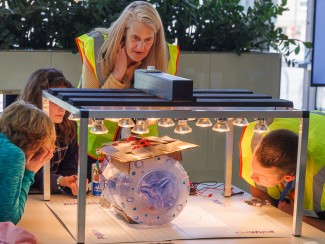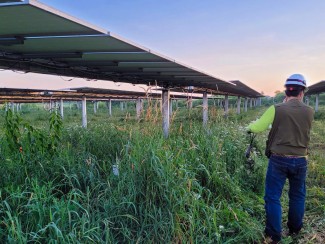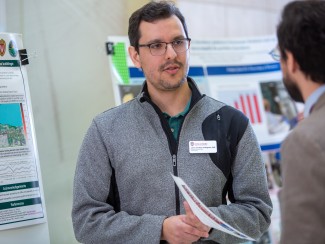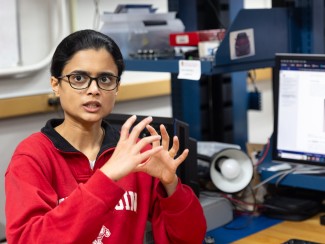Starting with the banning of incandescent light bulbs, energy as we know it is in the process of change in 2014. Topics such as energy independence, natural gas and Wisconsin’s clean energy policy are all themes to look to this year.
Greg Nemet, Associate Professor of Public Affairs and Environmental Studies, and Gary Radloff, Director of Midwest Energy Policy Analysis at the Wisconsin Energy Institute, are both experts in energy who shared some thoughts about the changing energy landscape.
Nemet said the whole picture of energy changed a lot in the last five years and it’s important to look at the reasons why. He said in order to look at this idea of “energy independence” that people seem to be thinking about, you have to look towards natural gas.
What is going on with natural gas?
Natural gas is a newer development that occurred within the last couple years. The concept of hydraulic fracturing is what ultimately led to the development of natural gas and the shift away from coal.
Hydraulic fracturing, also known as fracking, is the extraction of natural gas and oil that is locked up in rocks underground. Because of this development, natural gas now meets 24 percent of US energy demand and heats 51 percent of houses, according to the American Petroleum Institute.
“There’s a lot of people who are very excited about opportunities to use more natural gas for energy generation, particularly the electric sector. I think it does create some opportunities for us as a state and a nation,” Radloff said.
This excitement has encouraged the words “energy independence” to be tossed around by many. This concept, however, is not desirable or reasonable in the opinions of experts like Radloff and Nemet.
“I think that what we’re going through right now is kind of the excitement and the euphoria of these new discoveries,” Radloff said. “But, I think we have to be cautious about that going forward as well.”
What do you mean “energy independence”?
Energy independence is the idea that the US could grow entirely independent from other countries with their production of gas and oil. This means not only cutting off imports, but also exports.
Nemet said the reason people are tossing around the idea of energy independence is because of the developments with natural gas.
“We are now producing more natural gas than we can consume, or at least within the next few years that’s likely to happen. We’re right around 0 percent net import,” Nemet said. “So, in a way, you can say we’re “energy independent” on natural gas.”
This independence, however, doesn’t hold true for oil. Nemet said the US isn’t even close to being independent from oil. But, in his opinion, he doesn’t think we need to be.
“It’s somewhat counter to the whole historical trend of globalization and increased interdependence to talk about trying to be more independent,” Nemet said. “The notion of energy independence might not even be a really proper social goal.”
Instead of independence, Radloff thinks the real energy goal of 2014 should be to diversify the US’s energy portfolio. This would mean incorporating different kinds of renewable energy into the existing landscape. On a state level, some legislatures are striving to do this.
Where does Wisconsin stand with renewable energy?
According to Radloff, many of Wisconsin’s surrounding neighbors are encouraging renewable energy and implementing it into state policies.
For example, Iowa gets 30 percent of their energy from wind, and their governor said he wants Iowa to be a Midwest leader in solar generation. Minnesota just passed a solar energy mandate, which will require the purchase of more solar energy. Other parts of the Midwest are taking part, too, with robust wind energy generation.
As for Wisconsin, Radloff said we seem to be lagging behind.
“I think unless we create some policies to encourage [renewable energy], we will continue to lag behind in the marketplace,” Radloff said. “I think it’s going to take some public policy to really encourage more renewable energy in our state.”
According to Radloff, Wisconsin did pass an energy mandate called the Renewable Portfolio Standard a couple years ago. It required regulated utilities to provide at least 10 percent of their energy from a renewable energy generation source. These utilities, however, have reached that 10 percent mandate and aren’t purchasing any more renewable energy.
As a result, Wisconsin remains in what Radloff described as a stalemate in terms of renewable energy. Developing policies to encourage more clean energy could be in the future for Wisconsin’s energy landscape.





